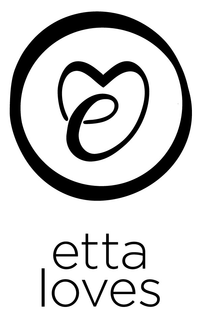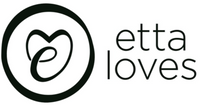The Wonderful World of Weaning
Introducing solid foods is an exciting milestone for babies and parents alike. It’s a journey filled with new tastes and textures, lots of mess and some very funny faces.
Here at Etta Loves we are passionate about nurturing your baby’s sensory explorations so wanted to offer some experience and support on the topic of weaning with help from friends (and weaning experts) doddl.
Understanding Weaning Readiness:
Before starting solids, watch for the signs that your baby is ready to wean.
Key indicators, as suggested by NHS guidelines, include:
- Ability to sit up and hold their head steady
- Coordination of eyes, hands and mouth to grasp and eat food
- The ability to swallow food instead of pushing it out with their tongue
Remember, these signs typically emerge around six months, but every baby dances to their own rhythm, and you, as their parent, are the best judge of their readiness (and yours!)
There are some different weaning approaches, and which you choose depends entirely on what works best for you and your baby. The two main methods are baby-led weaning or spoon-feeding purees. Or you can choose to do a combination of the two.
Baby-led weaning encourages self-feeding from the start, offering foods cut into baby-friendly sizes across different textures. ‘Baby-led’ is about fostering independence and exploration - look for cues like interest in food and reaching for yours and ensure your baby can swallow effectively. If they're not ready just take a break and try again another time.

Spoon feeding is where weaning is started by offering fruit & veggie purees from a spoon and gradually introducing different textures before moving onto finger foods. It tends to be less messy than baby-led weaning.
Weaning Steps and Tips:
- Start with a gentle introduction: Begin weaning when your baby is rested, offering milk first. Gradually increase the number of meals to different times of the day.
- Embrace variety: From 6 months onwards, you can introduce a colourful array of proteins, dairy, fruits, vegetables, and more. Don’t forget to offer sips of cooled, boiled water, ideally in an open cup or free flow spouted beaker to encourage oral development.
- Family Mealtime: Have your baby join the family table in a highchair whenever possible. Eating together means your baby will see and copy how others eat (and chat!) around the table.
Top Tip:
Whip out your trusty sensory flashcards or hanging squares to play with your baby (and buy yourself some time) during the meal time or when you’re preparing.

The Role of Clever Cutlery in Weaning:
Introducing the right tools is key to empowering your baby’s weaning journey. Our friends at doddl, recommend their specially designed baby cutlery to complement this journey:
- Baby Cutlery: Crafted with little hands in mind, these utensils are designed to make the transition to independent eating seamless. The short handles reduce gagging risks, and the smooth ends are comfortable for your baby's mouth. Safe to introduce from 6 months and the first stages of weaning, they recommend placing them on the highchair or table for your baby to explore and eventually use as a tool for eating.
Remember, there is no one-size-fits-all timeline for weaning. Tune into your baby’s cues and celebrate this new journey at their pace. With the right tools and tips, you can make it an exciting transition!
And if you're nervous about starting weaning read our blog post here to support you mentally as you enter this exciting stage of your baby's development.



